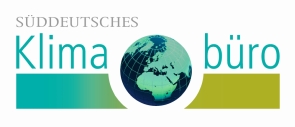M. Sc. Giorgia Fosser
- Doktorandin im Projekt "Bodenabtrag durch Wassererosion in Folge von Klimaveränderungen"
- group: IMK-TRO-Arbeitsgruppe "Regionales Klima und Wasserkreislauf"
Institut für Meteorologie und Klimaforschung
Karlsruhe Institute of Technology (KIT)
Hermann-von-Helmholtz-Platz 1
76344 Eggenstein-Leopoldshafen
| Titel | Projektgruppe | Förderung | Kurzbeschreibung |
|---|---|---|---|
| Soil erosion due to water erosion as a result of climate changes - Phase 2 | Verbundprojekt KLIWA (Klimaveränderung und Wasserwirtschaft) der Landesanstalt für Umwelt, Messungen und Naturschutz Baden-Württemberg |
KLIWA |
The second phase of the project 'Soil erosion due to water erosion as a result of climate changes' involves the implementation of the results obtained from Phase 1 (see Phase 1). SummarySoil erosion in small to medium catchment areas is often caused by short, locally confined, but intense rainfall. In the present project, the coupling possibility between a climate and erosion model was investigated. The regional physical-dynamic climate model COSMO-CLM was used for precipitation simulation, and the physical LISEM model was used for erosion and runoff simulation. The three reference locations Mertesdorf (RLP), Scheyern (BY), and Weiherbach (BW) were examined in two periods (1971 – 2000, 2021 – 2050) as well as 15 comparison locations to test the transferability of the method to larger areas. In COSMO-CLM, the resolution was gradually increased using a nesting procedure. First, the entire KLIWA area was calculated for both periods with a resolution of 7 km. A sensitivity study with a resolution of 2.8 km led to an optimal model configuration and optimal simulation areas for this project. In these areas, both periods were calculated again with a resolution of 2.8 km (Scheyern: 1990 – 1995, 2044 – 2049). These long-term simulations formed the basis for event-based simulations at the reference locations with a resolution of 1 km/15 min. The simulations with a resolution of 7 km/1 h were used to select events at the comparison locations. The calibration of the LISEM model was carried out using sensitivity studies and resulted in the most favorable setting of soil depth at 250 cm based on plausible water runoff values. These settings refer to a plausibility check at the reference location Weiherbach. Due to unpredictable gaps in the comparison data from the reference locations, no model validation could be performed. For the successful coupling of the two models, transfer programs were developed for the interfaces, enabling (semi-)automatic data exchange. The model coupling showed a dependency of the LISEM results on the COSMO-CLM results. Thus, a changed precipitation characteristic within the model chain is reflected in changed soil erosion and water runoff, providing a forecasting tool for catchment areas. Since the steps for transferring basic data into LISEM were also automated, a practical and large-scale application seems feasible. Modeling with COSMO-CLM showed that higher precipitation intensities can be expected in summer. In the study area around Mertesdorf, which is already the driest, a decrease in precipitation amount is expected. The duration and frequency of dry periods will increase. Similar trends are expected for Weiherbach and, to a lesser extent, for Scheyern. A comparison between simulations with a resolution of 1 km and 2.8 km showed that the results are very consistent, especially regarding the timing of events. However, the results in the 1 km simulations tended to underestimate the higher precipitation intensities on an hourly basis compared to the 2.8 km simulations. With LISEM, 114 simulations were conducted for the three reference and 15 comparison locations. On average across all locations, soil erosion increased by 2.0 t/ha with an average increase in precipitation amount of 4 mm. However, the changes were subject to very large fluctuations and are rather random due to the small number of selected precipitation events per location, so no general statements can be made. Furthermore, in addition to precipitation characteristics, soil moisture and other site characteristics as well as vegetation also have an influence on the extent of soil erosion and water runoff within the framework of climate changes, which was not investigated. |

